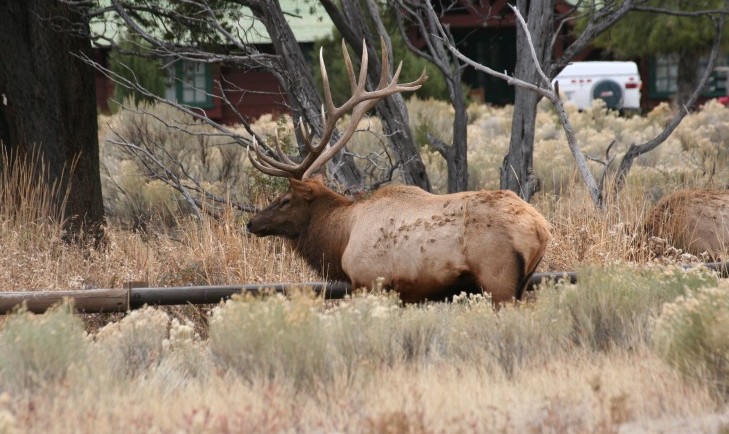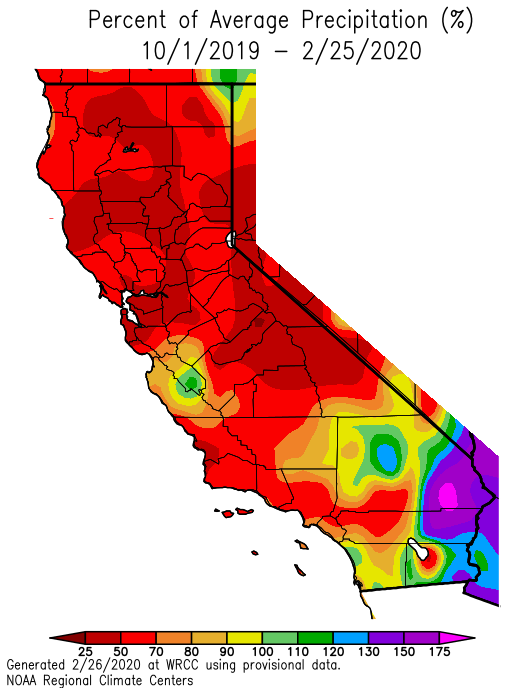
The Western Governors' Association keeps you updated on the news of the West. Here are the top stories for the week starting Feb. 24, 2020. Photo courtesy of Ben Hardill.
Every year, thousands of motorists and millions of animals are unintentionally injured or killed by collisions, pointing to the need for more wildlife-friendly transportation infrastructure. The development of migration corridors can be the solution to that problem.
Migration corridors are pathways, such as a highway underpass, that allow animals to traverse their often centuries-old migration routes without having to dart across a busy roadway, risking a collision with a passing vehicle. When it comes to implementing these structures, as always, the West is leading the way.
Colorado Gov. Jared Polis signed the nation’s first ever migration corridor executive order, according to The Hill, directing state agencies to identify which routes are crucial to animals’ seasonal habitats. Wyoming Gov. Mark Gordon has also taken executive action, using recommendations from an advisory group to frame policy that safeguards three existing corridors used by mule deer, while also calling for additional pathways to be identified and protected as well.
The New Mexico state legislature recently passed S.B. 228, which prioritizes “wildlife movement areas and wildlife-friendly transportation infrastructure proposals,” The Hill reports. Additionally, in Oregon, H.B. 2834 directs state officials to develop a Wildlife Corridor and Safe Road Crossing Action Plan.
Earlier this month, Western Governors shared policy on wildlife corridors and habitat connectivity for a hearing of the House Subcommittee on Highways and Transit Committee on Transportation and Infrastructure. The Governors shared WGA Resolution 2019-08, Wildlife Migration Corridors and Habitat, calling on federal agencies to support locally-developed initiatives to conserve fish and wildlife migration corridors and habitat.
In October 2019, Western Governors also urged Congress to reach bipartisan agreement on S. 2302, America’s Transportation Infrastructure Act, which includes several provisions and programs addressing wildlife crossings, habitat connectivity and wildlife-vehicle collisions.
Making Green Energy Greener: In 2019, wind generation surpassed hydroelectricity for the first time as the most prominent form of renewable energy on a megawatt hours-basis, according to the U.S. Energy Information Administration. While this wind energy boom may represent a positive trend for the region, it brings with it its own challenges. For example, the blades on wind turbines eventually reach the end of their lifecycle and often end up in landfills, The Colorado Sun reports. While these materials pose no threat to soil or groundwater, the optics aren’t ideal for an industry that wants to label itself “green.” To solve this problem, a variety of entities across the West are researching ways to recycle spent blades.
Addressing the Crisis of MMIW: Lawmakers in Utah are making the tragedy of Missing and Murdered Indigenous Women (MMIW) a top priority, which they are addressing through a new task force aimed at curbing the violence. According to Indian Country Today, the task force will identify policy shortcomings and the means to address them. In Wyoming, a bill addressing the MMIW crisis was recently approved by the State Senate Judiciary Committee. Among other things, it would “require the state to prepare a report on the number of missing people from Wyoming to include biographical information, and mandate that all law enforcement agencies in the state cooperate with the reporting requirements,” The Casper Star-Tribune reports.
 The Drought Returns: More than 23% of California is currently experiencing “moderate” drought conditions, up 9.5% from last week, according to The Mercury News. Additionally, another 69% of the state is classified “abnormally dry,” making this the Bay Area’s driest February in 156 years. If the current trend continues as expected, experts warn that the Golden State will end its rainy season in April with lower-than-average precipitation, leading to an exacerbated fire risk come summer. The good news: Because California’s last two winters have been abnormally wet, the water levels in the state’s major reservoirs are still near, or even above, average, helping offset the region’s historic lack of rain to an extent.
The Drought Returns: More than 23% of California is currently experiencing “moderate” drought conditions, up 9.5% from last week, according to The Mercury News. Additionally, another 69% of the state is classified “abnormally dry,” making this the Bay Area’s driest February in 156 years. If the current trend continues as expected, experts warn that the Golden State will end its rainy season in April with lower-than-average precipitation, leading to an exacerbated fire risk come summer. The good news: Because California’s last two winters have been abnormally wet, the water levels in the state’s major reservoirs are still near, or even above, average, helping offset the region’s historic lack of rain to an extent.
Beer and Wastewater: The small town of Harve, Montana was recently able to save itself $1 million on wastewater treatment, all thanks to a local craft brewery. Normally, when beer is produced, the water from the brewery must be treated before being returned to the ecosystem, in order to remove environmentally harmful chemicals like nitrogen and phosphorus, Inhabitat reports. This process usually requires the use of an aluminum-sulfate solution. Thanks to a donation from the Triple Dog Brewing Company, however, Harve’s wastewater plant was able to substitute the chemical for spent barely, with similar results. “These upgrades have greatly improved the quality of wastewater effluent discharged to the Milk River, particularly with respect to nutrient levels and ammonia toxicity,” said the Environmental Protection Agency, which presented the town with an Honorable Mention accolade as part of its annual awards.
Get the latest news about the West and its governors by following the Western Governors' Association on Twitter, Facebook and LinkedIn.
Check out our podcast, Out West, on Podbean, Spotify and Apple Podcasts.